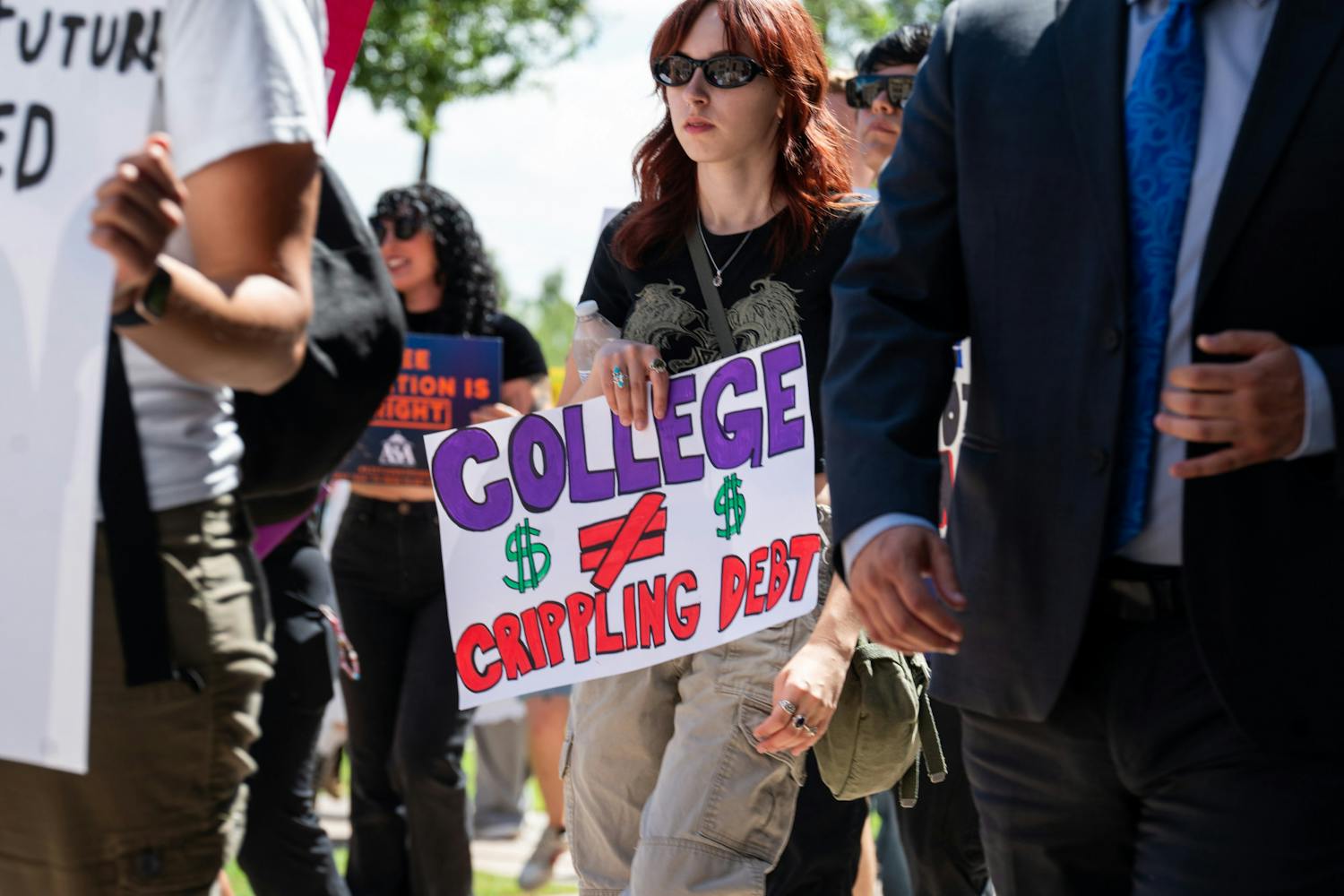The "Kachina Fountain" located in front of Old Main on Arizona State University's campus was the final piece to be completed in a series of public art restorations that began last summer and were completed last fall.
Dianne Cripe, director of ASU's Office of Public Art, which was created in 2001 and is located in the Katherine K. Herberger College of Fine Arts, said four of the 16 art pieces restored were of immediate interest. In 2001, when Cripe first began the job she was in charge of cataloging all the public art on campus and identifying pieces that needed renovation. The restorations cost $75,000 and were funded by Public Art Fund, a group based on campus, said Cripe.
"Southwest Pieta," created by Luis Jimenez in 1987, which is near the Nelson Fine Arts Building, needed a new coat of paint, touch ups, recoating, and cleaning.
The colorful sculpture, "Celebration" near the Farmer Education Building, which was put up in 1984 to commemorate ASU's centennial, needed a paint job. The aluminum sculpture was created by, Jerry Peart, a graduate of the ASU sculpture program. Peart provided a paint by number sketch for the painter who did the work.
"Fragment," a metal sculpture near the Moeur Building, put up in 1985, had rust damage caused by water and leaves. The sculpture's artist, J. P. Rico Eastman, had to make new sheet metal for the renovation
The "Kachina Fountain" was the more elaborate of the restorations and has been an ASU landmark for nearly 100 years. The fountain was made by Emry Kopta, in 1933 as part of a New Deal art curriculum to modernize the original fountain. The original fountain was made primarily of river rock. Kopta's design involved several themes of the Hopi culture, including a six-foot bronze statue of a Hopi flute player, which was to sit on top of a pedestal. Bronze was too expensive in the 30's, so the sculpture was never completed, until 2002, when a cast was made and installed in the Music Building courtyard.
"The Lattie F. Coor, is the latest addition to the public art on campus," said Cripe. "It's the first time architecture and art were merged into one project."
Etchings of words and designs cover the faade of the Lattie F. Coor hall, which is the largest public art on campus. Chicago artist, BJ Krivanek selected letters from Native American and Asian languages in an effort to represent language. During some parts of the day, shadows are cast on an inner wall including the one word, "Explore," which is cut in steel and suspended from the roof of the structure. The building was funded by ASU's Percent-for-Art program.
"The next project on the list is parking structure seven," said Cripe. "It will be a place where students can park and walk to class but also will want to hang out as well."
The parking structure was commissioned to be built on an acre near Sixth Street and will again merge art and architecture like the Lattie F. Coor, said Cripe.
Cripe believes the art has a huge impact on university life. "It gives campus a sense of identity and the art pieces are all examples of various eras," said Cripe. "From the Kachina Fountain built in the 1930's to the recent completion of the Lattie F. Coor Hall, there is diversity in all the art pieces".
"I think the art is great, it brings life to the University and makes it a little more interesting," said Nicole Wentworth, a junior who transferred to ASU last semester. "I use them as landmarks to find my way around campus as well."
Reach the reporter at leia.cumberland@asu.edu.



